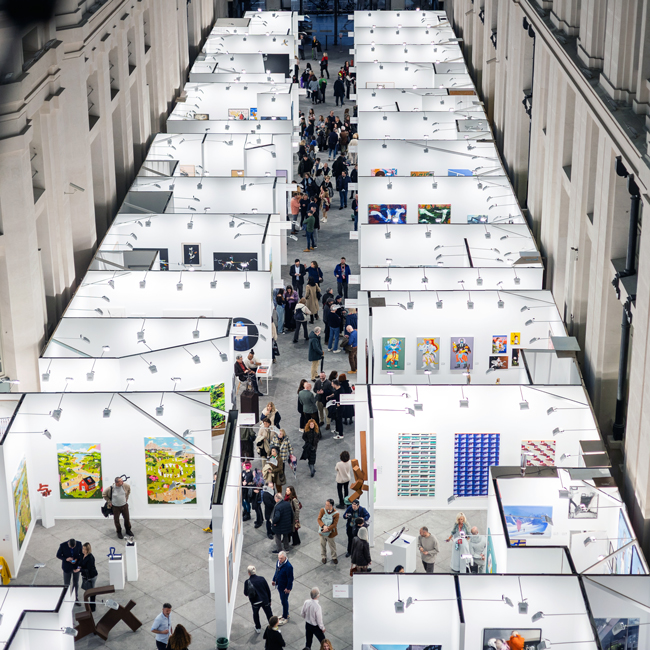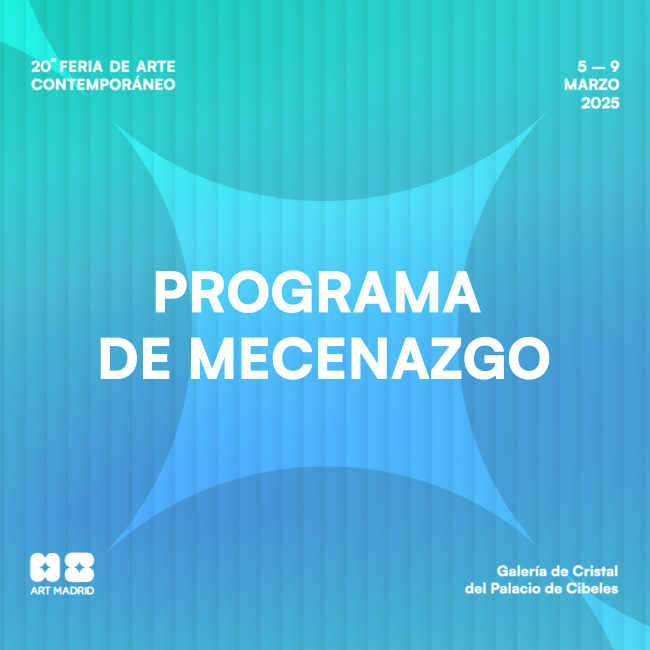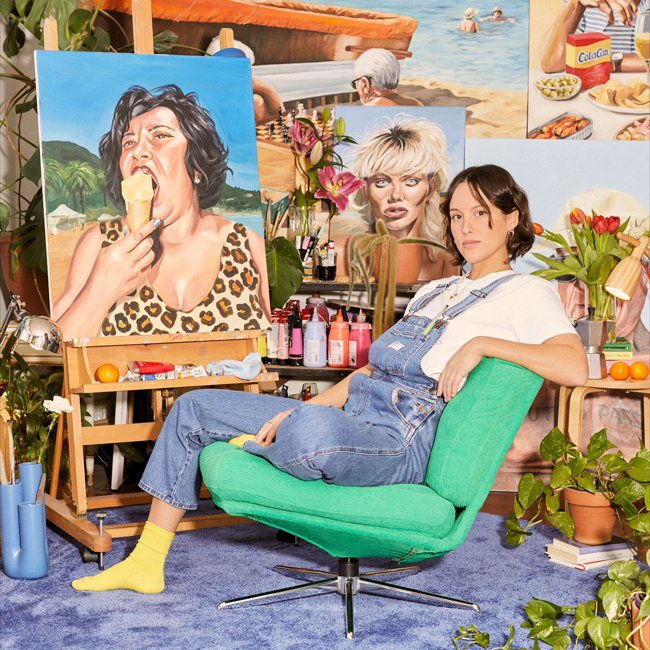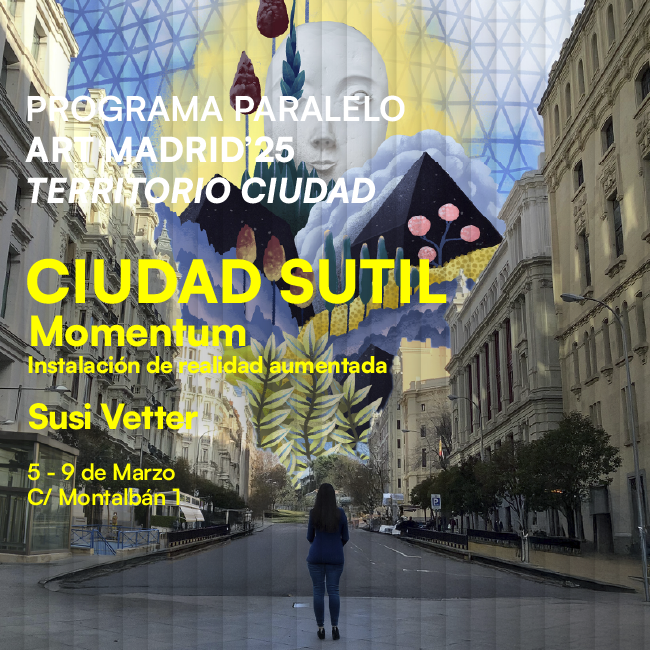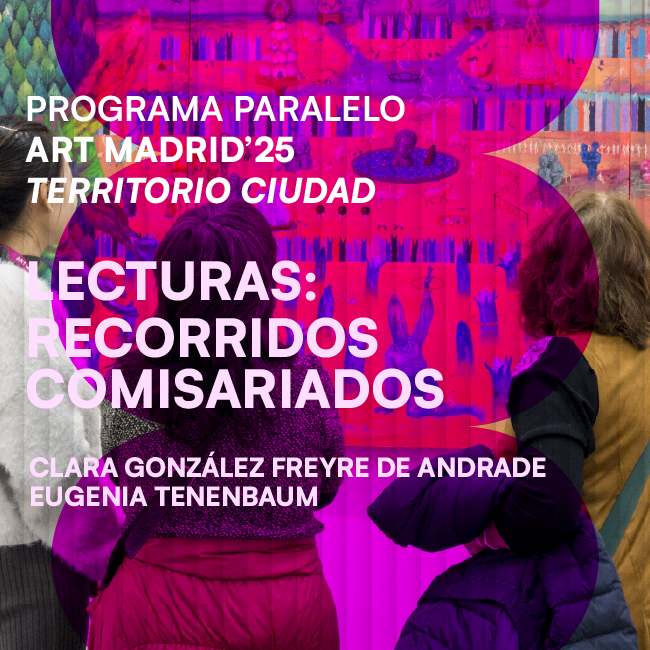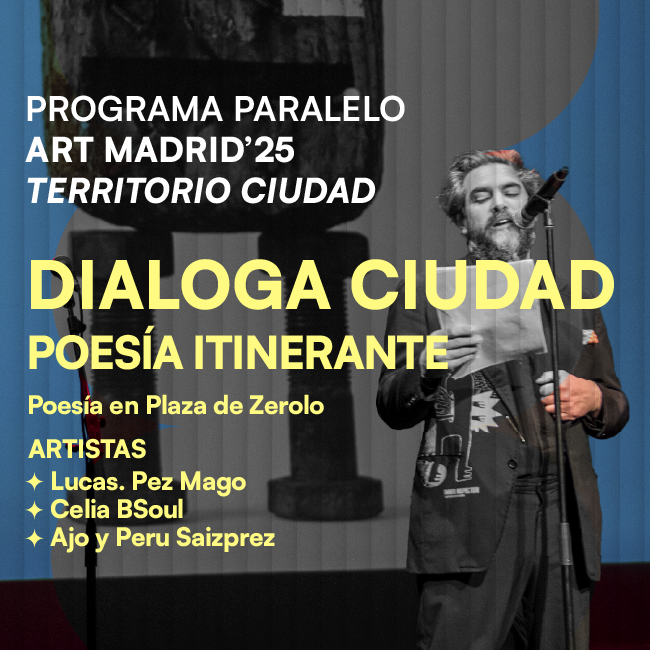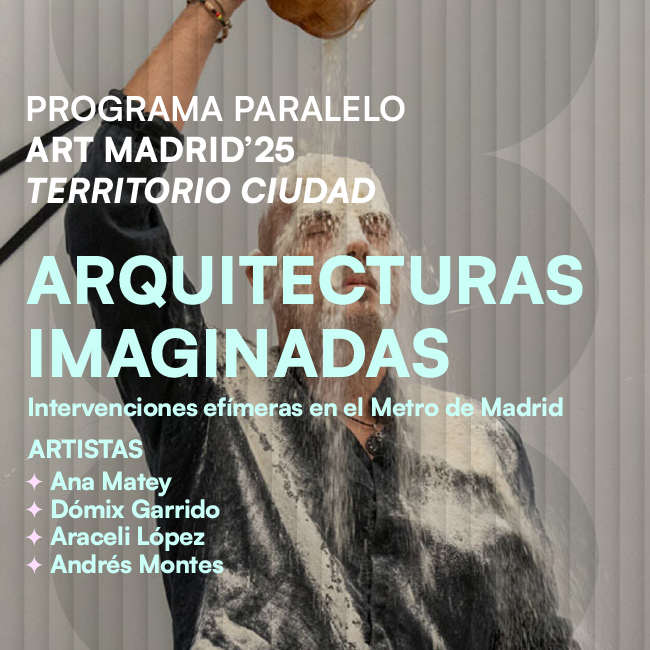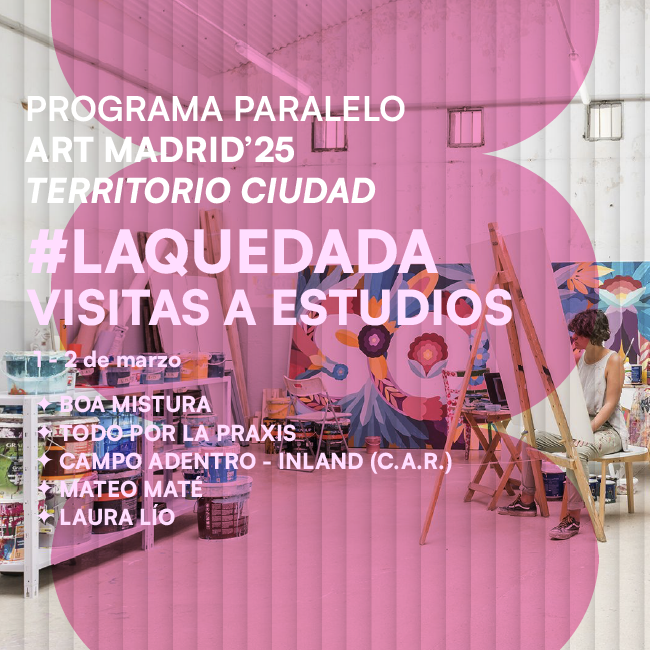DIEGO VALLEJO GARCÍA: FRAGMENTS OF A GENERATION
Jan 24, 2025
art madrid

CONVERSATIONS WITH MARISOL SALANOVA. INTERVIEW PROGRAM. ART MADRID'25
Diego Vallejo García (Ávila, 1991) has a classical style in his treatment or composition, but with a contemporary theme. He studied Art History before studying Restoration and Conservation, which gives his projects a degree of knowledge that crosses from the theoretical to the practical. His work is representative of the tendency towards fragmented painting and the superimposition of realities, from the abstraction of colour fields to the painted photomontage of striking realism. This photographic exploration is taken to the realm of pictorial distortion.
The artist makes a generational portrait without individualising anyone, seeking to capture the collective personality of his generation, of the customs. He paints everything with oils, glazes and materials that he uses, thinking a lot about the conservation of the pieces and their durability.

What role does experimentation play in your creative process?
I think that experimentation in the conception of my work is fundamental, as it begins even before dealing with the actual subject matter of the painting. It begins in the configuration of the image, working on it through digital media such as Photoshop or Procreate. However, that image will only be a guide at the moment of painting; as the work progresses and accidents with the material arise, the image becomes detached from the painting, and it is the painting that finally takes control. That is why accidents occur in my painting in which elements are eliminated or appear that were not originally planned.
What are your references?
Well, I have many references. If we start with the classics, the first one I would mention is Velázquez, as well as all the paintings of the 19th century. As for the more current ones, they could be Rubén Guerrero, Ignacio Estudillo, Phil Hale, Sean Scully. They are painters who, in the end, deal with matter rather than image. I think this is the natural process of any figurative painter: at the beginning, trying to capture reality more or less faithfully, and with time you realize that what should take precedence over the image is the painting itself.

Why do your works have such an emphasis on nocturnality?
My work is not so much about nocturnality, but rather about light. What nocturnality allows me to do is to work with artificial light, and it gives me the possibility of treating light in its different temperatures and powers to create different sensations or different realities.
Do you feel more comfortable portraying individuals or crowds?
Portraying individuals or crowds pursues the same goal: to seek a portrait of my generation and society through customs and actions. How do I get this portrait without being individual, but collective? By eliminating the faces of the characters.

What is the importance of movement, of action, in your works?
Movement and action are related to the previous question, because the movement of those individuals, crowds or characters in the work identifies them with a social movement and a collective identity. Also the movement that is really perceived in the work, of blurring, comes from trying to create a concept of character rather than a character in itself.




